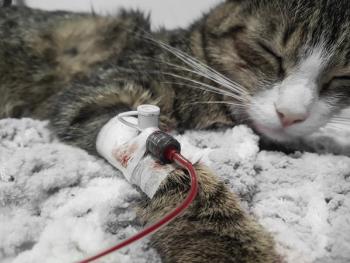
Pain control pushback
Q: We're getting some clients who don't want to pay for and don't see the need for some at-home pain control drugs. Can you offer us any tips for explaining the value and importance of pain control for pets?
Many pet owners don't understand how pervasive pain is (acutely and chronically), pets' ability to hide pain, the effect untreated pain can have on the nervous system or the fact that pain is a leading reason for euthanasia in older pets, says Dr. Robin Downing, CVPP, CCRP, DAAPM, owner of Windsor Veterinary Clinic and The Downing Center for Animal Pain Management in Windsor, Colo.
So, first things first: "We must educate, educate, educate. And that means speaking to our clients in language they understand and using verbiage that gets their attention," says Dr. Downing.
There are a few approaches you can use to effectively communicate the necessity of pain control to skeptical clients depending on the type of pain the pet is experiencing:
Acute pain. Use analogies. Explain to clients that because pets' nervous systems are similar to ours, anything that is painful for us will be painful for them-even a minor surgery. In many cases, they need pain medicine to prevent unnecessary suffering, much like humans do following an injury or procedure.
There's also scientific evidence that failure to manage pain as soon as possible can have a negative impact on the nervous system, potentially causing persistent pain long after the injury or surgery occurs.
"The more involved the surgery, such as an orthopedic procedure, the more likely this is to happen," says Dr. Downing. "I have dealt with dogs that cannot use their leg years after ACL surgery because they didn't have appropriate pain management early, and now the leg hurts all the time and they can't use it normally."
Chronic pain. Perform a careful palpation exam to show clients their pets' reaction when pressure is applied to certain areas.
"At my practice, I always demonstrate the pressure I will use on the patient by pressing on the client's forearm with their permission," Dr. Downing says. "That way, they know that the pressure I'm using should be perceived as pressure, not as pain. If the pet reacts-they consistently do-the client can see that the pet is truly hurting."
She also recommends using phrases like, "Your pet is suffering," or "Your pet deserves to be comfortable and relieved of pain." Choosing words with emotion tied to them makes it all the more likely that the importance of pain control will resonate with clients.
Newsletter
From exam room tips to practice management insights, get trusted veterinary news delivered straight to your inbox—subscribe to dvm360.




